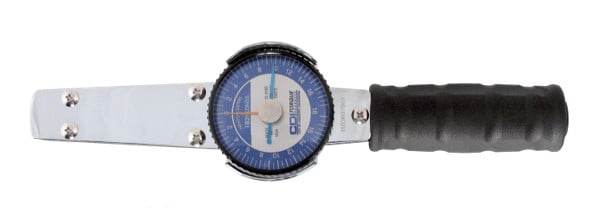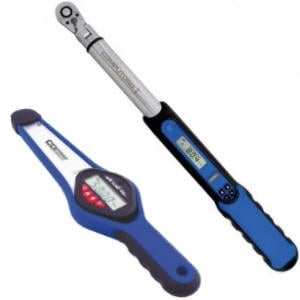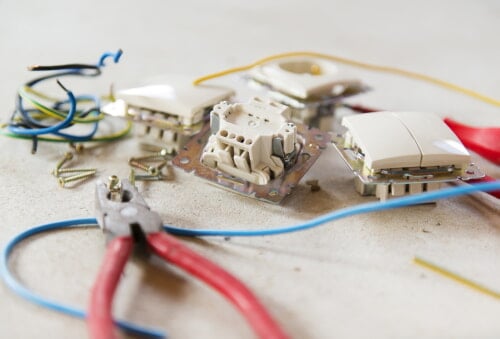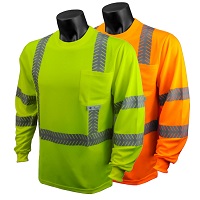Torque Wrench Ultimate Guidelines
Torque wrench user guide
A torque wrench ensures that you correctly tighten a bolt – not too tight and not too loose. This is important in many applications to prevent leaks. The torque wrench was invented in 1918 but did not gain popularity until 1938. At that time, Chrysler developed the beam torque wrench. Over the years, the torque wrench was improved to what it is today.
The Law of Lever
To calculate torque, you multiply force by distance. The law of lever states that if two equal weights are equal distances from a fulcrum, they will balance. If you add weight to one side, the heavier side will drop unless you move the lighter weight further away from the fulcrum. Thus, the law of lever equates clockwise torques and counterclockwise torques.
When you apply the law of lever to torque, it is “a twisting or wrenching effect exerted by a force acting at a distance on a body, equal to the force multiplied by the perpendicular distance between the line of action of the force and the center of rotation at which it is exerted.”
Definition of a Torque Wrench
A torque wrench is used to apply a specific torque to a bolt, nut or lag screw. The torque wrench is a socket wrench with internal mechanisms that measure torque. The internal mechanisms include primary and secondary arms, fulcrum, pivot block, cam, spring, lock ring, spacers and a load screw. The fulcrum, which is the balancing point, is between the primary arm and secondary arm.
Do We Need Torque?

Yes. As you tighten a bolt, it stretches. If it stretches too far, it loses its holding power. When you torque a bolt, you apply force to it. Too much torque means that the bolt stretches, either at the threads or the neck of the bolt.
A bolt can withstand a certain amount of torque. For maximum holding power, you want the bolt to stretch only to the point where it will return to its original length once you loosen it. When working on vehicles, bolts that are too loose will vibrate out. Those that are too tight will eventually break at the weak point.
Either situation is not good at the speeds vehicles travel. A torque wrench ensures that each bolt has the proper torque so that the components it is holding together do not fail and cause an accident.
Some people believe they can guess how much torque they put on a bolt, but if they were to check it with a torque wrench, they would find that they are rarely on the money. Improperly torqued bolts and nuts lead to failure, especially in an engine that reaches high revolutions per minute.
Torque Tension and Friction
To maximize torque, you need to minimize friction. Thus, adding any lubricant, including thread lockers, changes the torque placed on the bolt. Internal tension is what gives the bolt its clamping force, also referred to as pre-load. Thus, the more tension you have, the stronger the clamping force and the less likely the two pieces will come apart. Ninety percent of torque is friction, and 10 percent is the amount the bolt stretches.
When you put too much torque on a bolt, it stretches it vertically, that is, from the head through the shank and threads. Every bolt has a torque rating. In some cases, such as head bolts, the bolts are manufactured to handle the exact amount of torque to keep the heads bolted to the engine.
Too little torque and the heads will not have enough pressure on the head gasket,d and it will blow. Too much torque and the pressure in the engine will cause the bolts to break – if they do not break while you are torquing them down.
Always check with the manufacturer to see if it recommends using lubricants on a bolt with a specific torque.
What is the Type of Measurement for Torque?
Torque is measured in foot-pounds, inch-pounds, or Newton meters. A foot-pound, abbreviated as ft. lb., is 1 foot length times 1 pound. One foot-pound is the same as 12 inch-pounds.
A Newton meter is measured differently. One Newton force is .225 of a pound. Instead of using imperial measurements, Newton meters (Nm) use metric distances. Two Nm of torque equals two meters times 1 Newton force.
How to Calculate Torque?
Calculating torque is simply multiplying force by distance. The force is the weight. Thus, 2 pounds times 1 foot is 2 foot-pounds of torque.
Use a conversion calculator to convert between units of measure for torque wrenches.
Types of Torque Wrenches
Several types of torque wrenches exist. Some or better for some applications, while others are better for other applications.
- Click – The click-type can only be used from 20 percent to 100 percent of the full scale. It is not accurate below 20 percent. It must be stored at its lowest setting, never used in a breakaway situation, and is usually cycled before using it. They may come in subtypes, including preset and TQ split beam wrenches.

- Dial -The dial type is also accurate from 20 percent to 100 percent of the full scale. You must approach the final torque slowly and evenly. While they can be used in a breakaway situation, the user must use caution. The dial type is good when the user needs to see the effect of torque.

- Digital -The digital type is one of the easiest to use and is competitively priced. It has a 15-degree flex ratchet head and is accurate from plus or minus 20 percent to 100 percent of the full scale. It allows you to apply perfect torque every time.

Torque Auditing Methods
You should “audit” torque after you torque bolts. Auditing checks to ensure you have the proper torque. You can audit toque in three ways:
- First movement test – Mark the fastener and the surrounding application. Slowly apply force in the tightening direction until you see or feel the fastener move. The torque and the second reading should be very close.
- Loosening test – Apply torque in the opposite direction of the tightening direction. When the fastener breaks loose, not the torque wrench reading. It should be nearly the same as the amount of torque used to tighten the fastener.
- Marking test – After torquing the fastener, mark the surface, continuing the mark to the surface being clamped. Loosen the fastener and retighten it until the marks are aligned. The torque to retighten the bolt should be the original torque you applied to the fastener.
Torque Limits of Square Drives
All square drives have a maximum torque spec. You need the specifications for drive adapters and socket tools. The maximum torque specifications are as follows:
- 1/4-inch: 250 inch-pounds
- 3/8-inch: 100 foot-pounds.
- 1/2-inch: 250 foot-pounds.
- 3/4-inch: 700 foot-pounds.
- 1-inch: 2,000 foot-pounds.
Thus, if you need to tighten something to 275 foot-pounds, you need a half-inch drive torque wrench.
Three Primary Factors That Affect the Application of Torque
The three primary factors that affect torque are:
- The magnitude of applied force.
- The direction of applied force.
- The location of applied force.
How and Where to use Torque Wrenches
When determining what type of torque wrench you need, know the type of fasteners you are using. If you’ve ever had fasteners come loose, you need a torque wrench to avoid this type of come-back. The fasteners are coming loose because they do not have enough torque. Likewise, if fasteners are breaking, they are over-torqued. A torque wrench can prevent that.



